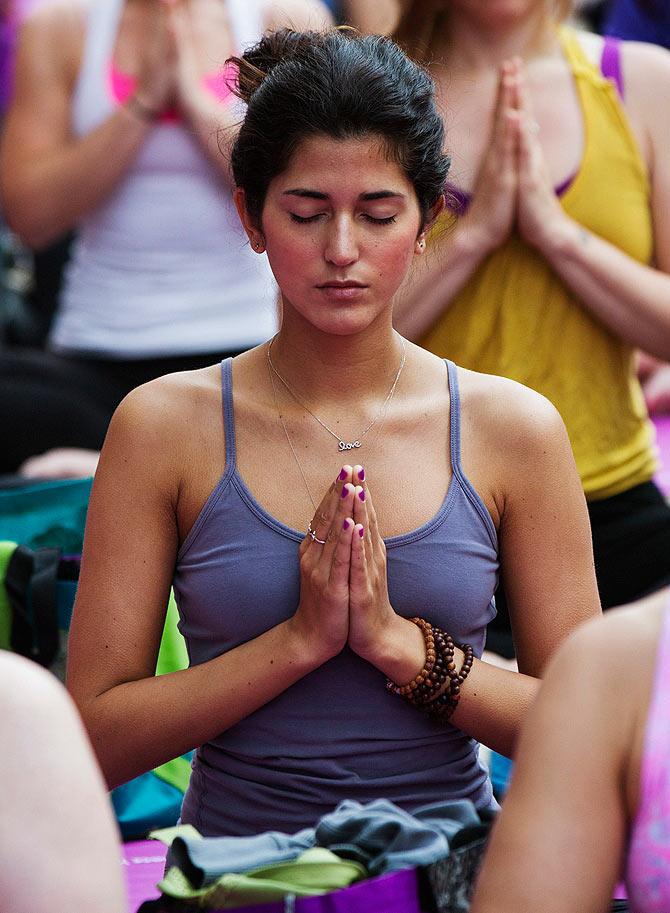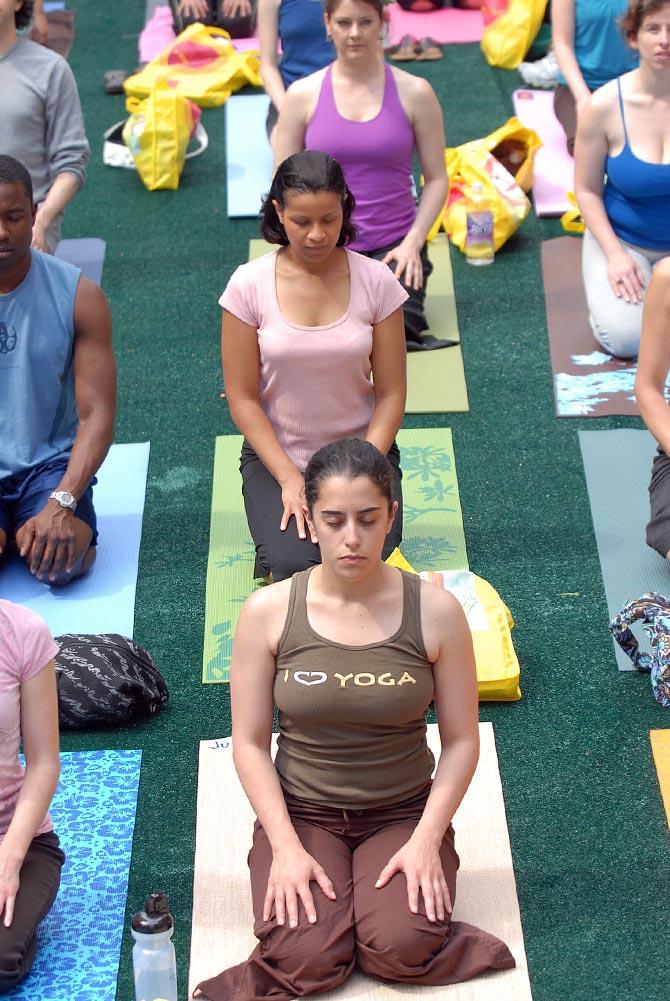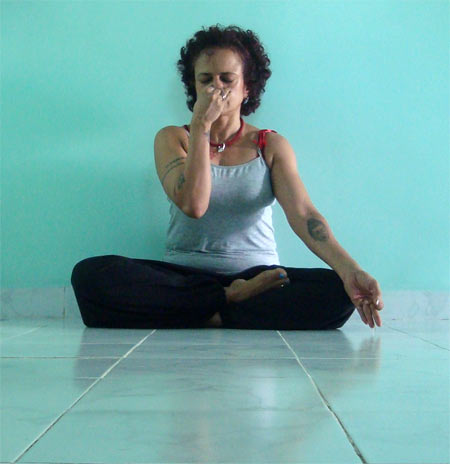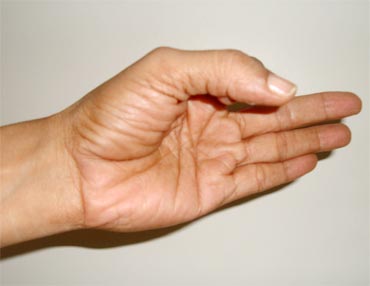
Here are five simple tricks to de-stress yourself quickly
The trick about stress is, to first acknowledge that you cannot do without it!
None of us, including the greatest gurus, can control situations with the potential to explode. We can only control our response to it. Often when people plan to de-stress, they hope to do away with the stressful situation, and then tie themselves in a knot wishing them away, a near impossibility.
There are many de-stress tricks. But what works for one and may not work for the other. The best way to choose is to try a few of these tricks, and find out which works for you, to keep it as part of your emergency kit.
You may have a few options, simply because sometimes one trick may work in a particular circumstance, while the other may fit the bill in yet another situation. This could depend on factors such as, for instance, whether you can lie down for some deep breathing.
The option may be open if you are at home, but it is obviously out of question in a workplace, unless you have control over that (if you are a boss, or have a cabin to yourself).
The reason why what works for one may not work for the other is because we are dominantly a certain type of person -- either visual (in which case an image may have a more direct and immediate impact), or auditory (in which case a verbal cue will work immediately) or kinesthetic (which is a "feeling" person, with heightened sensitivity).
So the trick should be chosen according to that. Often we never find out this aspect about ourselves unless we do formal training in mental programming (a lot of classes offer this) and are serious meditators.
The best way to make these practices work for you is to have a daily practice of them, even on days when there is no stress. That way, you will simply shift fast into that de-stress mode at will, when required and when emergency calls.
Shameem Akthar, yogacharya trained with the Sivananda Yoga Vedanta Center, offers you a few tricks to help you de-stress quick and fast.
Kindly

Bring the soles of the feet together
Though this is done best when lying down, you can even do it when seated, including at a workplace.
If it embarrasses you to be seen doing it, then you can sit at a desk where the legs are not visible to others.
If lying down, you may just relax on your back, place soles of the feet together, draw the feet closer to the groin, place palms on the ground, facing up, and shut eyes.
Totally relax, waiting for the breath to deepen.
You will find the knees loosen up, and fall more to the ground, the hips relax as does the lower back. The breath will deepen on its on own in a while, if you do not fidget.
This pose is called supta baddhakonasana (lying leg-locked angle pose).
If seated in a chair, you may keep your knees loose, and then place the soles of the feet together gently, the feet may dangle, so it is good if you can place them on a stool.
Keep palms facing up, at the thighs. Shut eyes. Wait till the breath relaxes completely.
How this works
Usually the main reaction for stress is at the legs and feet.
We are still biologically and primitively geared to run when we feel super-anxious. This is called the fight-flight mechanism, and triggers the stress hormone adrenaline which sets off the reaction of stress in a cascade through the rest of our body systems, intimately affecting blood pressure, heart beat, sweating, voice, and many other things that indicate stress to us.
By bringing the soles of the feet, you trick the mind into turning off the stress reaction at the limbs, as also happens with the palms facing up, and being loose.
A super simple way to beat stress, and help the mind brings itself back to homeostasis.
Kindly

Exhale longer
You do not even need to do this too long. You can even do it standing, if the situation is scrunched and you have no option.
However, all meditation techniques work faster when you are able to assume a meditative seated or lying posture (many have already been covered by this columnist in earlier sections).
When breathing focus on how you inhale. Next focus on your exhalation.
Not surprisingly, if you are stressed, the latter is going to be shorter.
You now steady the technique, inhaling to a count of four, and exhaling to a count of four (or six, or eight).
The longer exhalation will come with practice only.
Initially, a major breakthrough will be achieved if you exhale to the same length as you inhale. Do up to 30 or so breaths in this fashion. Even five to ten such breathing sets will calm you down immediately.
How it works
Usually when we are stressed, we tend to inhale more desperately. Our exhalation will be barely there.
However, we exhale deeply when we relax. A sigh is a way of the body, for instance, to force induce a relaxation.
A yawn too, is a somewhat similar attempt by the body.
A baby's breath has very deep inhalation and exhalation.
So yoga tries to take you back to that state, where you are relaxed. As you learn to exhale longer, you will be able to switch off the stress mechanism faster. It requires practice.
Kindly

Left nostril breathing
Shut the right nostril, and breathe exclusively through the left nostril for a few minutes.
Relax and do it any time you feel a panic attack being set off.
You can also hyperventilate through the left nostril: shut the right nostril with your index finger, and breathe forcefully out through the left nostril, continuously, about ten each time.
Do five times in this fashion. You can do this anytime to induce left nostril breathing.
How it works
Left nostril breathing triggers the parasympathetic nervous system, or the ida nadi (as it is referred to in yogic parlance).
It also connects with the brain hemisphere that is the calmer, logical part of us.
It is referred to as the "cooling" nostril because it keeps us mentally cool.
You can try it to switch off anxiety states (as before a speech, or a meeting, exam etc).
Kindly

Yoga nidra (Sleep of yoga)
Progressive body awareness is used by many mind sciences today, including hypnosis, because of its powerful healing impact on the mind.
Ideally it is done lying down in the corpse pose (shavasana) though you, under work circumstances, can do it seated also.
Ideally all meditations must be done with eyes shut. But if it is impossible, at work, do it with eyes open.
Progressively move your awareness over different parts of the body, starting the fingers, taking them individually, and covering the right hand, and shifting to the left hand, and so on.
Inner organs, parts of the body must be included. It is best to follow a system or direction of flow.
Somewhere along the way, the mind will drift off, or if your doing it lying down, you may even fall asleep due to the deep state of relaxation!
Cover the entire body, including the head. A five minutes of this is equated to five hours of rest!
How it works
It induces a light trance state, and switches off the reticulating activating system of the brain (where the subconscious static and chatter takes place). This shifts the electrical activity of the brain to the alpha mode in which an individual is both relaxed and alert at the same time.
It is a very healing, soothing state for all systems in our body and deeply relaxing and de-stressing.
Kindly

Vatanaashak mudra (Hand gesture to control the air element)
Press the index finger with the thumb. Do for each hand. Shut eyes and sit back. You may do this anytime, when overwhelmed.
Even holding it for a few minutes in a quiet state will work.
How it works
The brain map in the body, called homunculus man, has the largest representation for the human hand.
Yoga works on this by using mudras, and tweaking the controls from inside.
The index finger is said to be the air element in yogic parlance -- which in biology could mean that it is more connected to systems that are relaxed, anxiety and creative states.
By pressing down on the finger, this aspect of our personality is said to be controlled.
Click on MORE to see another feature...